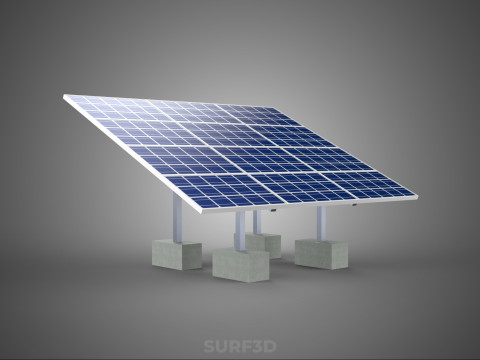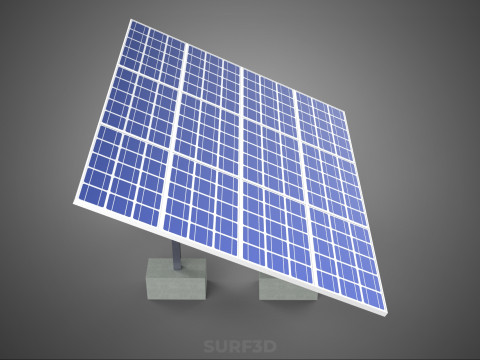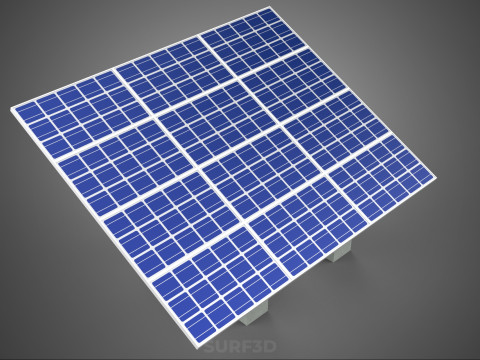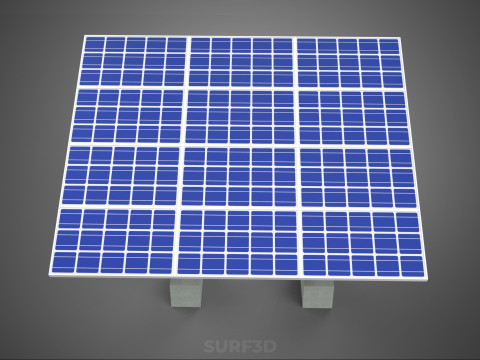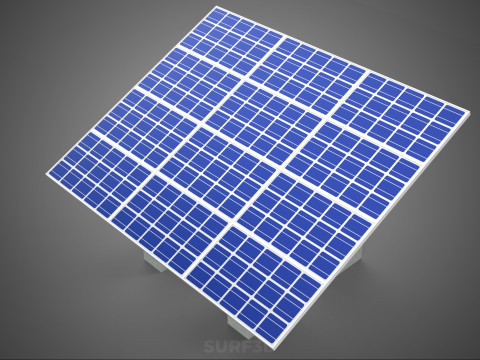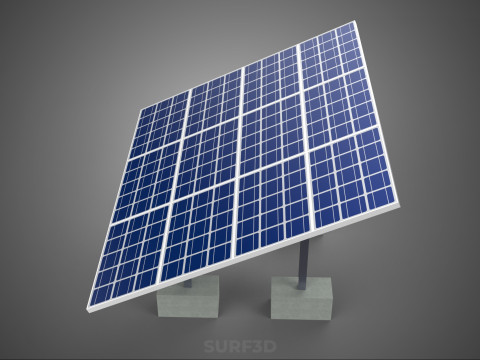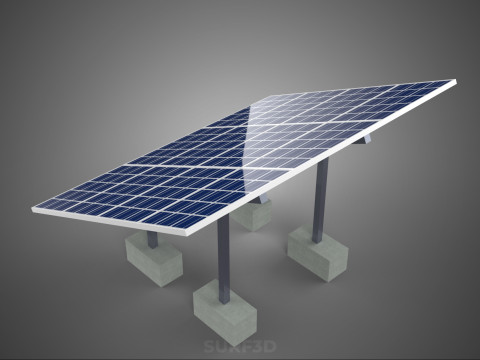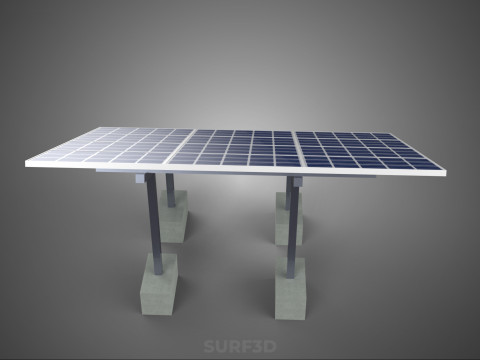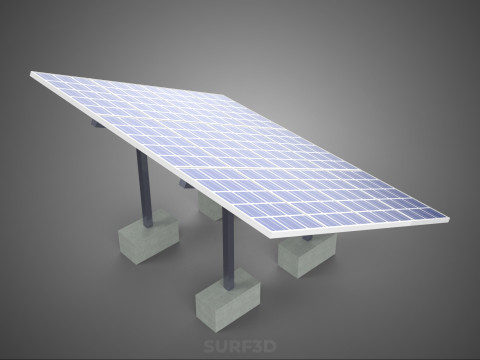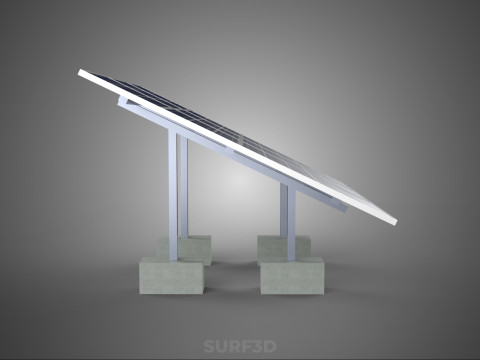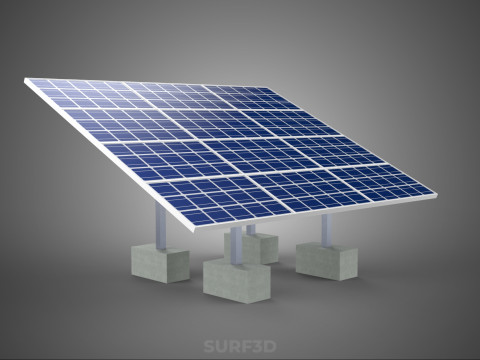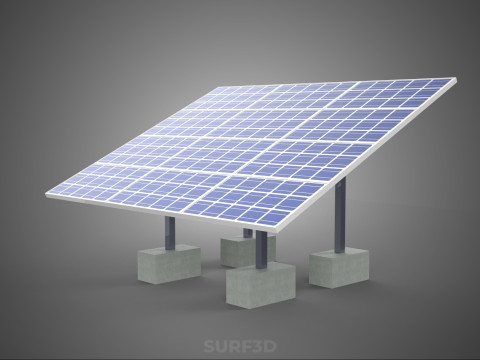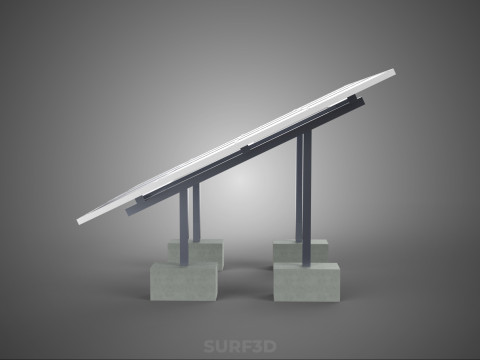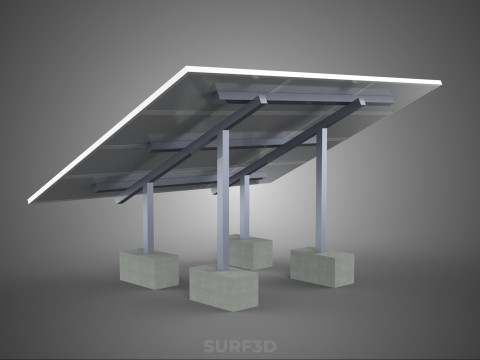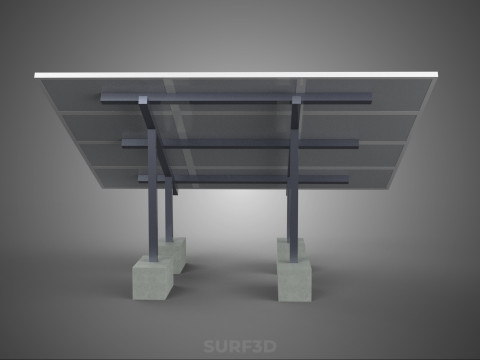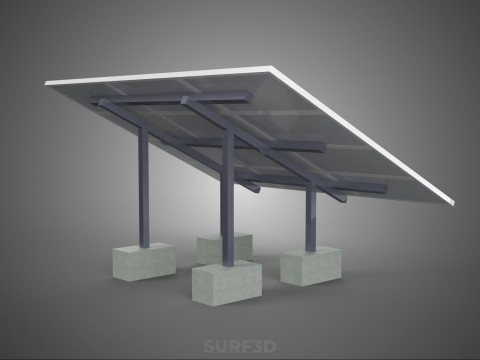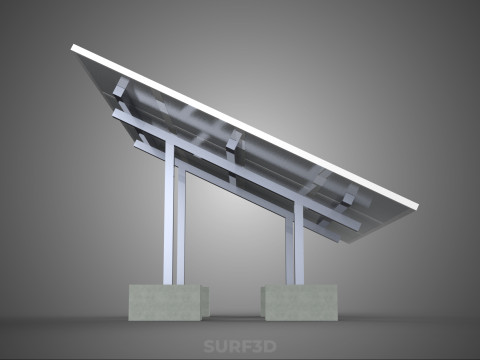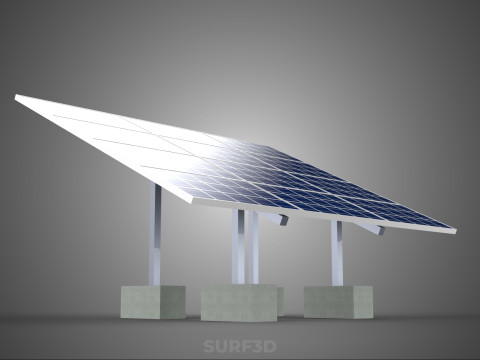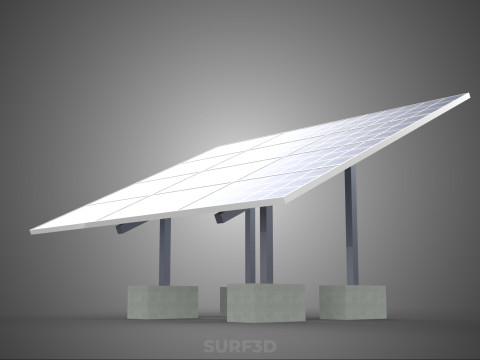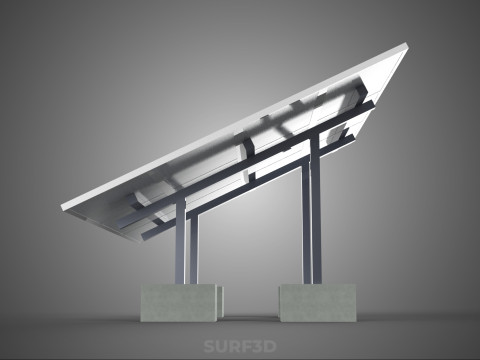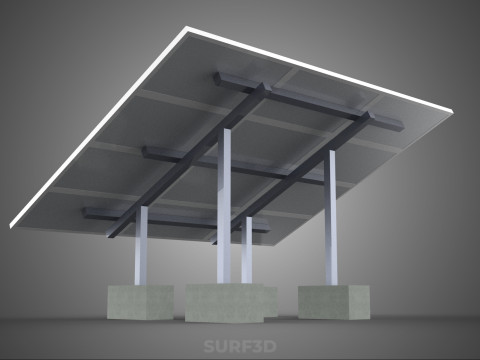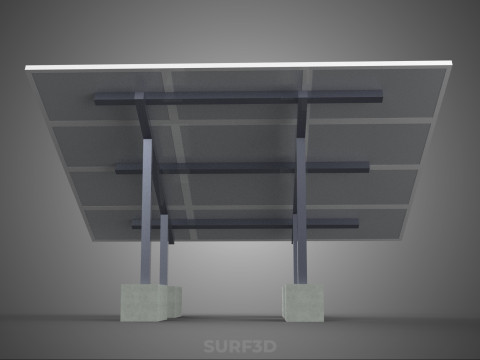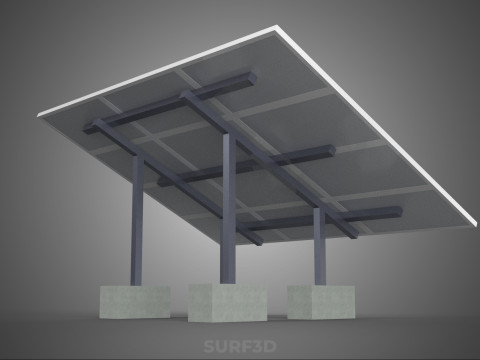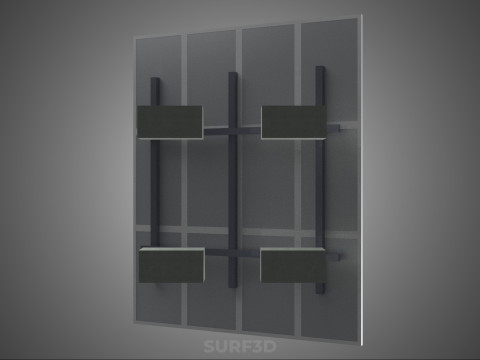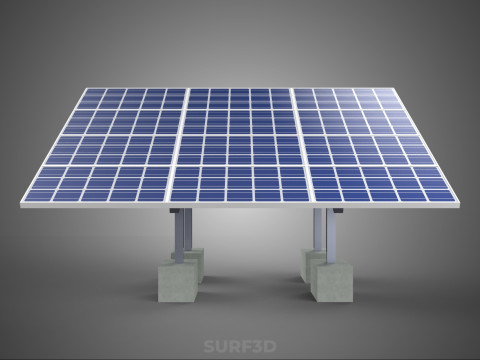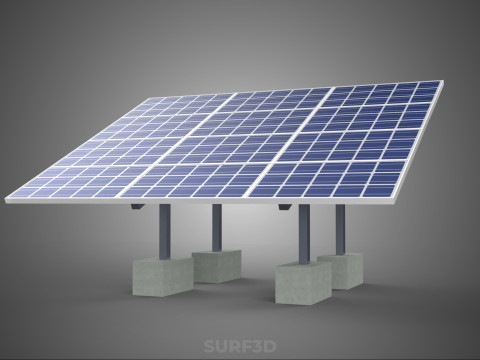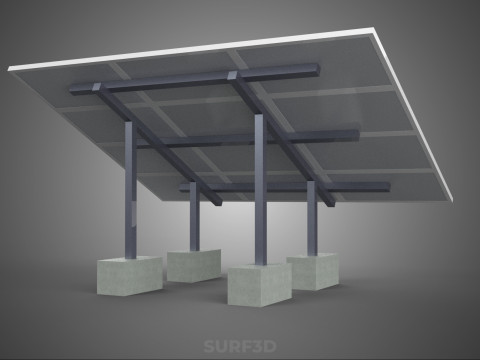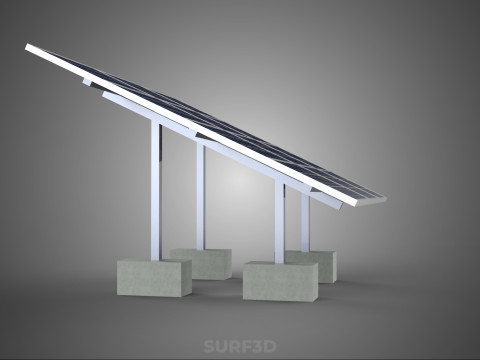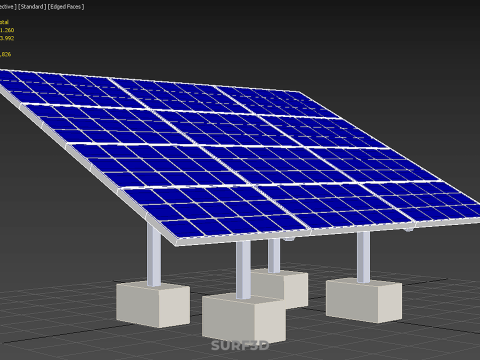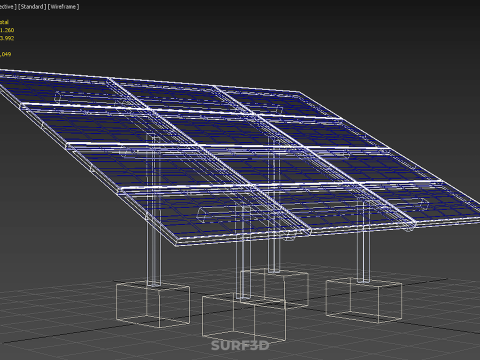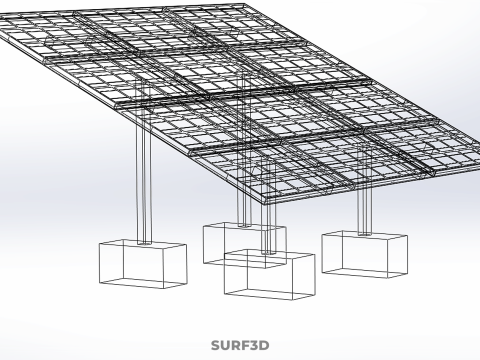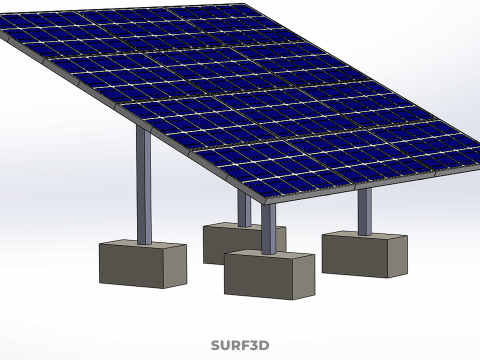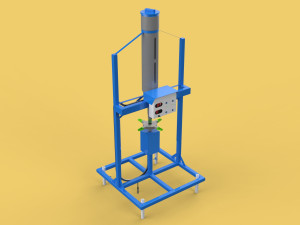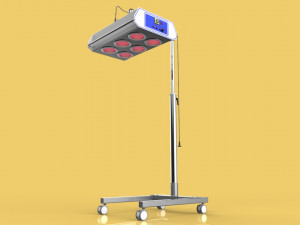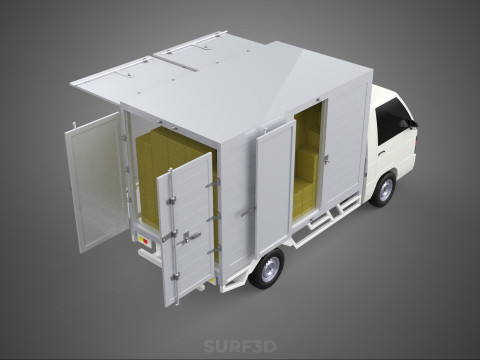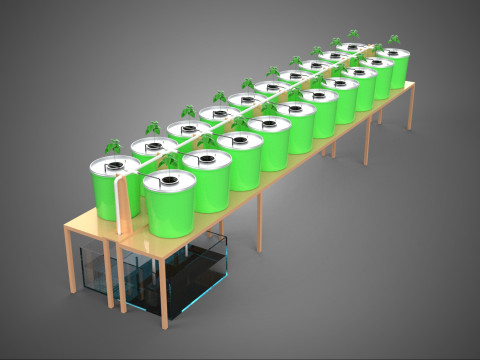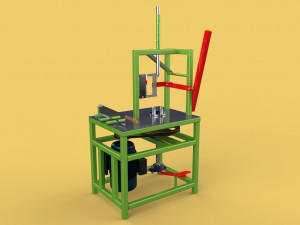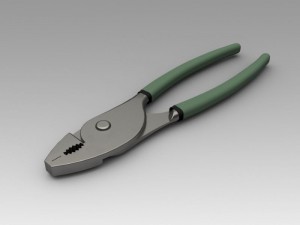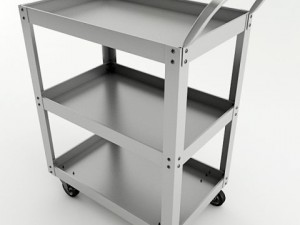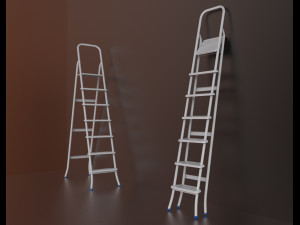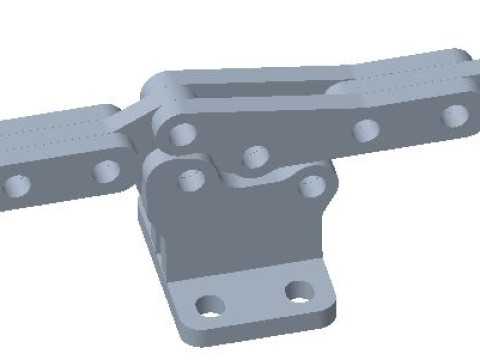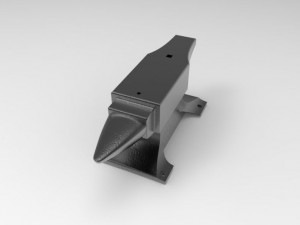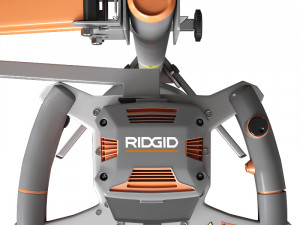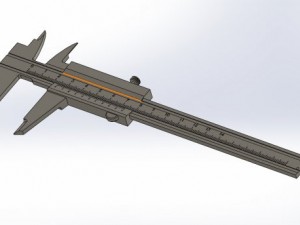支架支撑结构框架阵列太阳能电池板太阳光伏 3D 模型
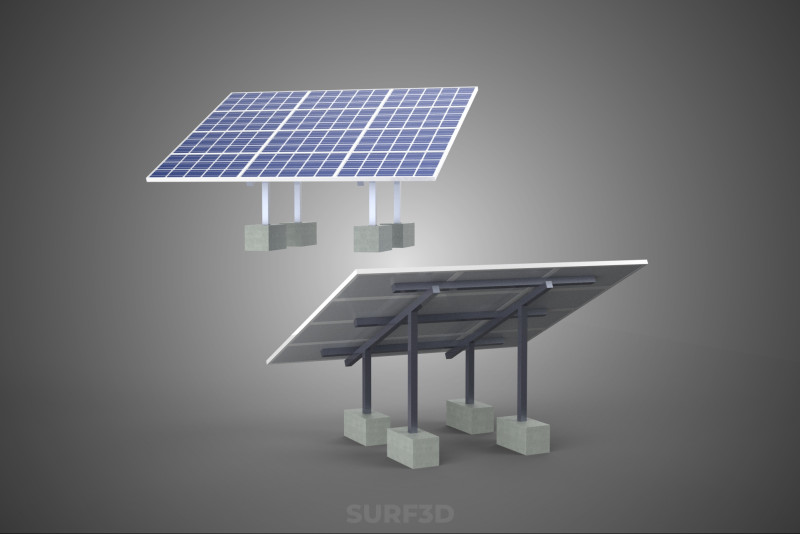
- 请求作者的产品支持
- 可用的格式:
- 项目 ID:595978
- 日期: 2025-09-01
- 多边形:31260
- 顶点:43992
- 动画:No
- 纹理:No
- 操纵:No
- 材料:
- 低聚:No
- 集合:No
- UVW 贴图:No
- 使用插件:No
- 打印准备:No
- 3D扫描:No
- 成人内容:No
- PBR:No
- 人工智能培训:No
- 几何:Poly NURBS
- 包装 UVs:Unknown
- 日期:328
描述
High-quality 3D assets at affordable prices — trusted by designers, engineers, and creators worldwide. Made with care to be versatile, accessible, and ready for your pipeline.
Included File Formats
This model is provided in 14 widely supported formats, ensuring maximum compatibility:
• - FBX (.fbx) – Standard format for most 3D software and pipelines
• - OBJ + MTL (.obj, .mtl) – Wavefront format, widely used and compatible
• - STL (.stl) – Exported mesh geometry; may be suitable for 3D printing with adjustments
• - STEP (.step, .stp) – CAD format using NURBS surfaces
• - IGES (.iges, .igs) – Common format for CAD/CAM and engineering workflows (NURBS)
• - SAT (.sat) – ACIS solid model format (NURBS)
• - DAE (.dae) – Collada format for 3D applications and animations
• - glTF (.glb) – Modern, lightweight format for web, AR, and real-time engines
• - 3DS (.3ds) – Legacy format with broad software support
• - 3ds Max (.max) – Provided for 3ds Max users
• - Blender (.blend) – Provided for Blender users
• - SketchUp (.skp) – Compatible with all SketchUp versions
• - AutoCAD (.dwg) – Suitable for technical and architectural workflows
• - Rhino (.3dm) – Provided for Rhino users
Model Info
• - All files are checked and tested for integrity and correct content
• - Geometry uses real-world scale; model resolution varies depending on the product (high or low poly)
• • - Scene setup and mesh structure may vary depending on model complexity
• - Rendered using Luxion KeyShot
• - Affordable price with professional detailing
Buy with confidence. Quality and compatibility guaranteed.
If you have any questions about the file formats, feel free to send us a message — we're happy to assist you!
Sincerely,
SURF3D
Trusted source for professional and affordable 3D models.
More Information About 3D Model :
A **Stand Support Structure Frame Array Solar Panel Sun Photovoltaic** refers to the comprehensive engineered system designed to mechanically support, orient, and secure photovoltaic (PV) modules, forming a solar panel array, for the efficient capture and conversion of solar insolation into electrical energy. This critical infrastructure ensures the structural integrity, optimal performance, and longevity of a solar power generation system by providing a stable and durable mounting platform that withstands environmental forces.
The primary purpose of such a structure is multifaceted:
1. **Structural Integrity:** To securely hold individual PV modules and the entire array, preventing damage from wind, snow, seismic activity, and other environmental loads.
2. **Optimal Orientation:** To position the PV modules at the precise tilt angle and azimuth (horizontal direction) that maximizes solar energy capture throughout the day and year, thereby optimizing energy yield.
3. **Durability and Longevity:** To protect the sensitive PV modules from direct physical impacts and facilitate proper drainage, minimizing water pooling and potential degradation.
4. **Accessibility:** To allow for safe and efficient installation, maintenance, and cleaning of the PV array.
5. **Electrical Integration:** To provide a pathway for cable management, protecting electrical wiring from environmental exposure and physical damage, often incorporating grounding provisions for safety.
These support structures are composed of various interconnected components, including:
* **Foundations:** Anchoring elements that connect the structure to the ground or roof, such as concrete piers, ballast blocks, roof ***********s (stanchions), or non-penetrating clamps.
* **Vertical Supports:** Posts, columns, or stanchions that elevate the array to the desired height and angle.
* **Horizontal Rails/Purlins:** Beams that span between vertical supports, providing the primary framework for attaching PV modules.
* **Module Clamps/Fasteners:** Specialized clips, bolts, and washers designed to securely grip the frames of individual PV modules to the horizontal rails without damaging the modules.
* **Bracing:** Diagonal elements that enhance the rigidity and stability of the entire structure against lateral forces.
Support structures are categorized based on their installation location and functionality:
* **Ground-Mounted Systems:** Often used for utility-scale or larger residential/commercial installations, these structures are anchored directly into the ground. They can be fixed-tilt (static), manually adjustable, or equipped with solar tracking systems (single-axis or dual-axis) that continuously reorient the panels to follow the sun's path, significantly increasing energy yield.
* **Roof-Mounted Systems:** Common for residential and commercial buildings, these are affixed to the building's roof. Configurations include flush-mounted (panels parallel to the roof plane) or tilted systems (using racking to achieve an optimal angle on low-slope roofs). They must consider roof load capacity, waterproofing, and integration with existing roofing materials.
* **Specialized Structures:** Include carport solar arrays, which provide shading and power generation; building-integrated photovoltaic (BIPV) systems, where PV modules are part of the building's envelope (e.g., roof tiles, facades); and pole-mounted systems for smaller, remote applications.
Materials commonly used in the construction of these support structures are selected for their strength, durability, corrosion resistance, and cost-effectiveness. These primarily include:
* **Aluminum Alloys:** Lightweight, highly corrosion-resistant, and possess a good strength-to-weight ratio, ideal for module frames and lighter racking components.
* **Galvanized Steel:** Hot-dip galvanized steel offers excellent strength and corrosion resistance, frequently used for ground-mount foundations and heavier structural components.
* **Stainless Steel:** Utilized for fasteners and critical connection points due to its superior corrosion resistance and strength.
* **Concrete:** Essential for foundations, providing mass and anchoring.
Design considerations for these support structures are rigorous and involve detailed structural engineering. Key factors include:
* **Environmental Loads:** Calculation of wind loads (uplift, shear, downforce), snow loads, and seismic forces according to local building codes and standards.
* **Optimal Tilt and Azimuth:** Determining the precise orientation to maximize annual energy harvest, considering latitude, shading analysis, and seasonal variations.
* **Site-Specific Factors:** Geotechnical analysis for ground-mounted systems, and *****sment of roof structure capacity for roof-mounted installations.
* **Thermal Expansion:** Accounting for material expansion and contraction due to temperature fluctuations.
* **Drainage and Airflow:** Ensuring proper water runoff and adequate ventilation to prevent overheating of modules.
* **Electrical Grounding and Bonding:** Integrating provisions for electrical safety and protection against lightning strikes.
In conclusion, the stand support structure frame array for solar panel photovoltaic systems is far more than a simple stand; it is an engineered backbone that is integral to the safety, efficiency, and economic viability of solar energy installations, ensuring modules are precisely positioned and securely maintained throughout their operational lifespan.
KEYWORDS: Photovoltaic, Solar Panel, Mounting System, Support Structure, Frame, Array, Stand, Rack, Fixed-tilt, Tracking System, Ground Mount, Roof Mount, Carport, BIPV, Foundation, Rails, Clamps, Wind Load, Snow Load, Tilt Angle, Azimuth, Structural Engineering, Aluminum, Steel, Corrosion Resistance, Durability, Energy Generation, Renewable Energy, PV System, Module Mounting
需要更多的格式吗?
如果你需要一个不同的格式,请打开一个新的支持票和为此请求。我们可以转换到 3D 模型: .stl, .c4d, .obj, .fbx, .ma/.mb, .3ds, .3dm, .dxf/.dwg, .max. .blend, .skp, .glb. 免费格式转换我们不转换 3d 场景 以及 .step, .iges, .stp, .sldprt 等格式。!
使用信息
支架支撑结构框架阵列太阳能电池板太阳光伏 - 您可以根据基本许可或扩展许可,将此免版税 3D 模型用于个人或商业用途。基本许可涵盖大多数标准用例,包括数字广告、设计和可视化项目、商业社交媒体账户、原生应用、Web 应用、视频游戏以及实体或数字最终产品(免费和出售)。
扩展许可包含基本许可授予的所有权利,没有任何使用限制,并允许在免版税条款下将 3D 模型用于无限的商业项目。
阅读更多


 English
English Español
Español Deutsch
Deutsch 日本語
日本語 Polska
Polska Français
Français 中國
中國 한국의
한국의 Українська
Українська Italiano
Italiano Nederlands
Nederlands Türkçe
Türkçe Português
Português Bahasa Indonesia
Bahasa Indonesia Русский
Русский हिंदी
हिंदी
